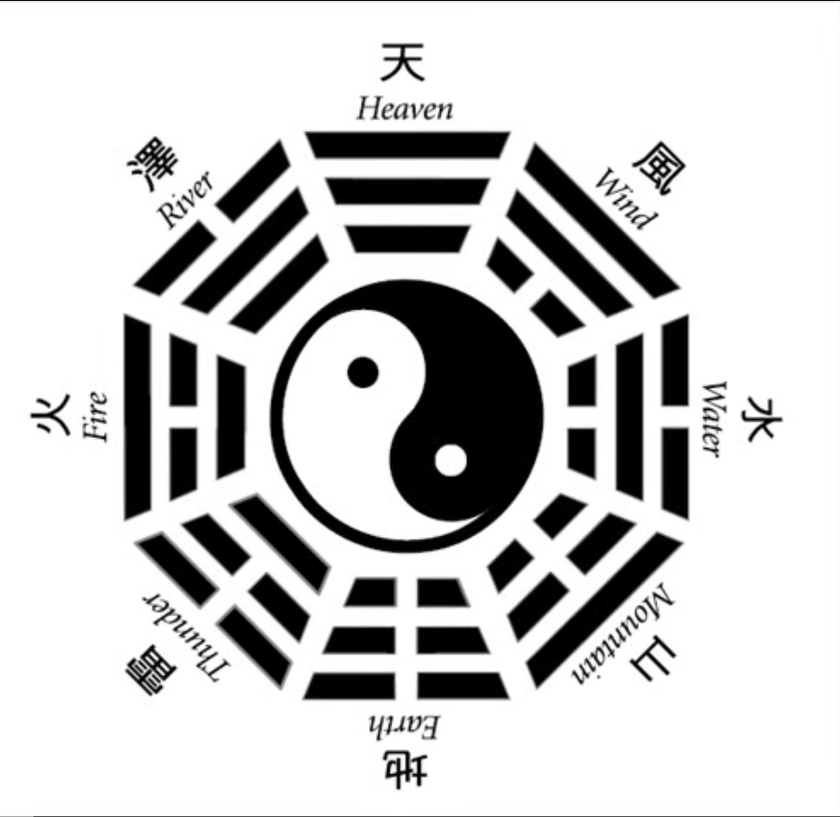The first rule of baguazhang is to know the eight guiding principles. They are as follows:
1st-One top (or upholding)
The tip of the tongue is held to the roof of the mouth, pressing toward the teeth. This keeps the tongue out of danger from being bitten should the mouth be opened to get more oxygen while fighting, as well as helping to complete a TCM energetic circuit.
2nd- Two uprights
The head and body (and thus the heart) are held upright. Meaning the heart must be in the right state, only then will you gain true martial skill. Martial code states clearly that we practice for health and the ability to defend oneself, not to learn fighting to bully others.
-3rd Three points (or three tips)
When practicing the tip of the hand, the foot, and the nose are all in alignment. Where there is alignment there is uprightness. The three are then focused on the opponent or center of the circle.
-4th Four extremities
There is strength in the four extremities. One must be able to put strength into the four extremities. I take this to mean in martial arts strength in the hands and feet. But also looking at TCM:
The nails are the extremity of the tendons.
The teeth are the extremity of the bones.
The hair is the extremity of the blood.
The tongue is the extremity of the flesh.
-5th Five uniques
When moving or practicing the five major joints must be rounded to allow their unique uses, any of which can be used to defeat an opponent.
1-shoulders, 2-elbows, 3-wrists, 4-waist, 5-knees
-6th The six harmonies
-eyes and heart=where you look is where your thought is, and where your thinking is where your looking.
-waist and body=wherever the body turns the waist also must turn.
-hands and feet=one can’t put out a hand without the foot or a foot without a hand.
-7th Seven stars
Refers to stepping. When turning the circle seven star stepping is the basis for changing footwork. It also refers to the seven styles of attacking while turning the circle, the forms.
-8th The eight trigrams (or the Bagua)
Yin, Yang, and the eight trigrams. The eight animal systems.
Eight strengths: upper, lower, solid, hollow, attacking, retreating, left, and right. “To be used in the reverse of the situation” references having speed in your changing.
Here I introduce the basic elements of the snake system. I will be putting together some of my favorite snake combos in the coming weeks. I’ll try to also upload some run throughs of the applications as I am able.
Here I discuss using the rear hand to directly attack and open the opponent as opposed to the first two methods that address a more responsive role, responding to the opponent by rushing or withdrawing. Here we will initiate an attack in order to cause and utilize the response. Soft and leaning strikes are introduced as well as the method of turning the back.
In this clip I explain how the withdrawing attack method specializes in stepping and how that can be utilized based on the forms and direction changes of the bear system. Drilling these short combos can be beneficial to those new to the art as a way to get familiar with the different systems and strategies. Drilling these combos can also benefit more seasoned practitioners by giving them an idea of how to apply the art in real life situations.
Yin style Bagua is first a combative art. Unlike many traditional arts these days we study strictly for combative use. YSB contains no watered down flamboyance as is found in many other traditional arts in current times. Training of Yin style Bagua is strictly for self defense and is taught as it has been handed down to us from the practitioners who came before us.
Dong Hai Chuan passed down the art of Bagua to Yin Fu, his greatest and longest studied student, to whom this branch of Bagua is named for. Yin Style Bagua differs from other styles of Bagua in many ways. Yin Fu passed his art on to Men Baozhen, who in turn taught Xie Peiqi. Dr Xie trained He Jinbao fully in the combative aspects of this art. All these practitioners hailed from Beijing, where He Jinbao resides to this day. He Jinbao teaches workshop across the United States and Europe annually. There are many study groups in the States that train regularly and come together to attend these workshops throughout the years. ...

Tomorrow our group will be running the interlocking shooting form, from 2024, as well as introducing the new form Matt Bild just uploaded to the Facebook group page, the turning the back shooting form. Should be a blast. Finally have a temperate day here on the east coast for a change.
Slight departure from the snake content but this is what the group studied yesterday. The following post is from the group Facebook page:
Training Lion system yesterday in our study group. Focusing on the different uses of the waist to generate force in the strikes. Moving with the waist, moving against the waist, and expanding the waist.
-The rising sweeping strike was used to emphasize the waist moving with the strike.
-The inward sweeping strike was utilized to place emphasis on the method of the waist moving against the strike.
-And lastly the upright chopping strike was used to emphasize more of a dropping or expanding usage of the waist.
First we started with a stationary strike drilling method to work on the waist and the arm/strike coordination. We then added in a step, using the triangle stepping in place or an advancing-withdrawing type of one step drilling method.
This allowed us to add in hand-foot harmony to the already used hand-eyes and waist-strike coordination. Thus turning...












